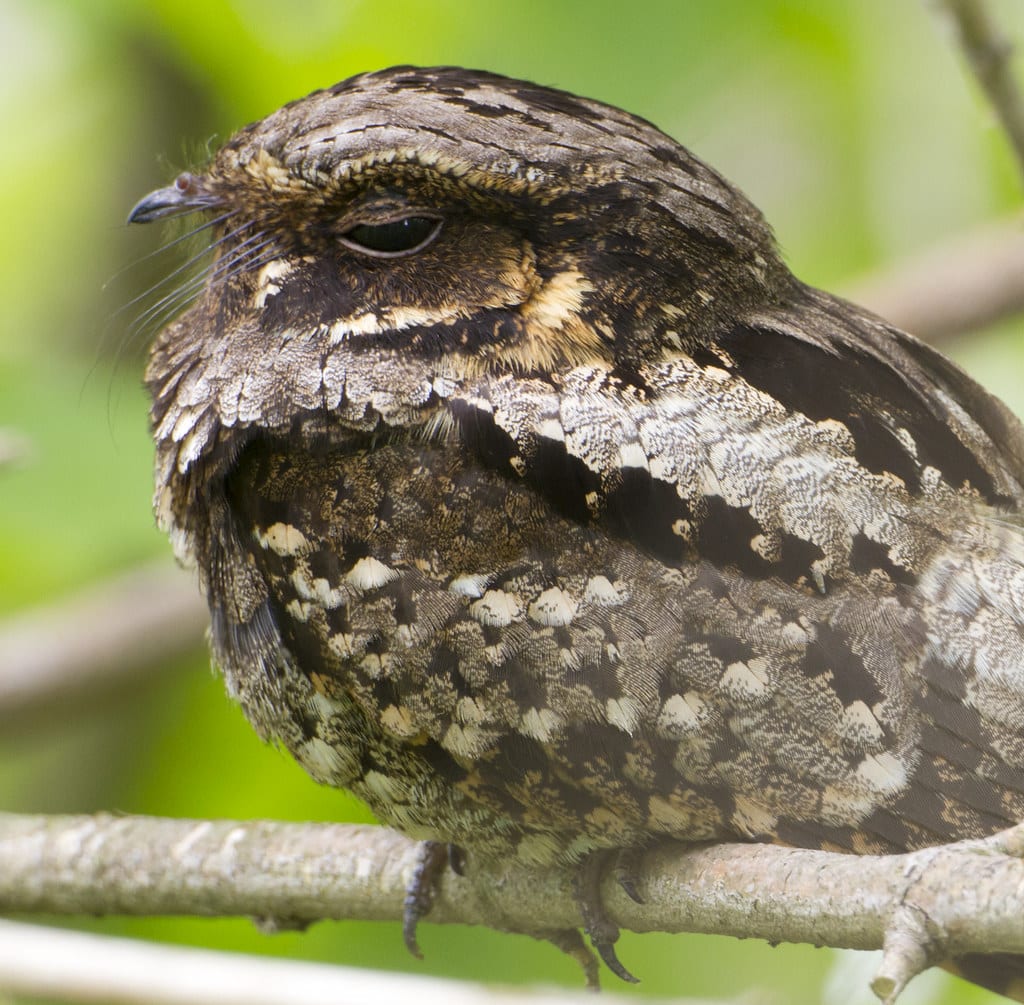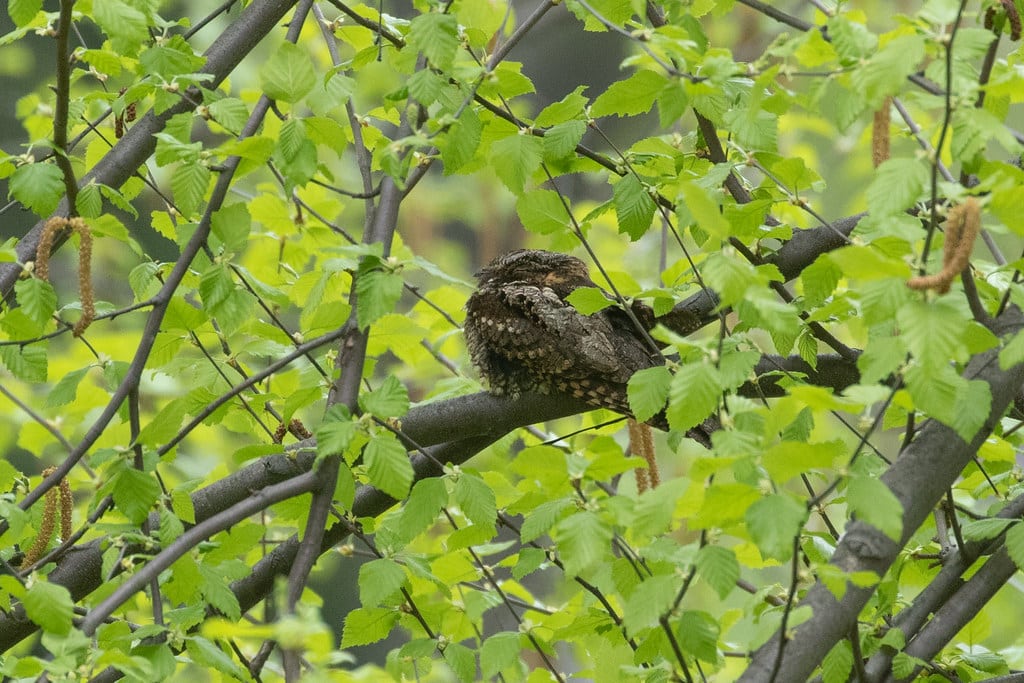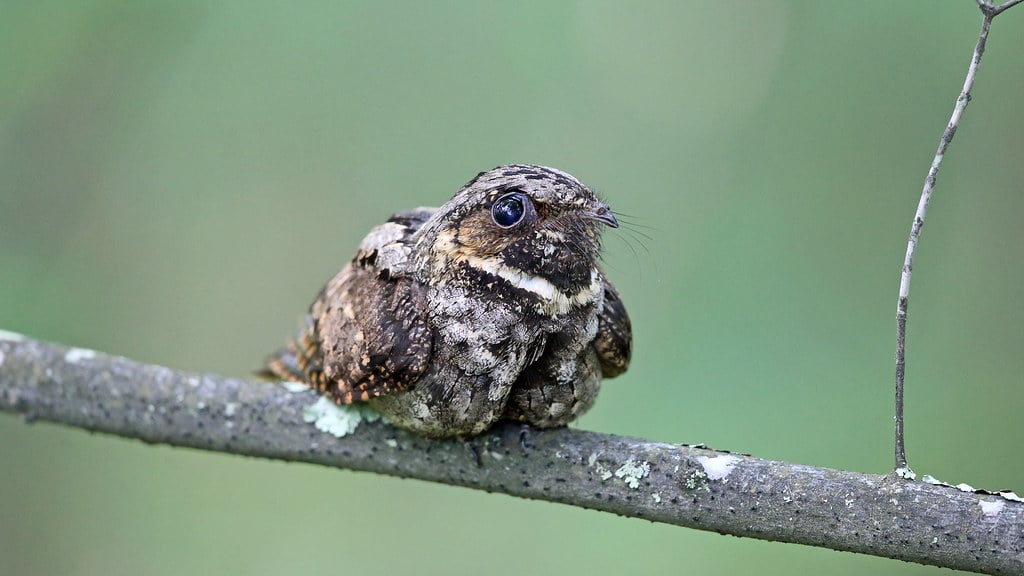
The Whip poor will bird call is well known, but this is not an easily spotted bird unless you have night vision! The Whip-poor-will is a nocturnal bird that lives in the FAB region. While it’s not a bird you often spot with your eyes, you do know of its existence due to its unique nighttime call that sounds a bit like the words whip-poor-will!
If you live near a clearing or field on the edge of the woods here in the FAB region, there is a very good chance you have heard this bird’s call at night. Click here to hear it for yourself!
The habitat for this night bird ranges from Central America and Mexico all the way up here to North America. Whip-poor-wills are solitary birds, and unlike doves, blue jays and other similar sized birds, they do not typically live in flocks or groups. It’s not unusual for them to share habitat with other nocturnal bird species that have similar habitat requirements, such as nighthawks.
During migration, they might join mixed-species foraging flocks with other small songbirds. Outside of migration, they are not known for socializing or forming any close associations with other bird types.
They have large dark eyes which help with their night vision, and although they have very small beaks, their mouth opens exceptionally wide to allow for them to catch large night flying insects like moths and beetles. They have a delicate fringe of feathers along their mouth that almost has the appearance of whiskers.
Eastern whip-poor-will Origins

Something that many people aren’t aware of is the Latin name for the whip-poor-will is Caprimulgus vociferus, which translates to ‘goat-sucker who calls loudly’. Over a thousand years ago, it was thought that these birds stole milk from goats at night. Some stories even suggested they took so much milk the goats would become sick, blind, or even die! What was more likely is they were eating insects that are often plentiful around livestock that weren’t kept well. Poorly kept livestock are very susceptible to disease and low milk production. But, easier to blame the little, tiny birds than to deal with livestock mismanagement.
Whip-poor-wills are monogamous during the breeding season, which takes place in the summer here in Canada. They are ground laying birds, which means they build the nests on the ground. They might use a bed of leaves, needles or other plant materials around a shallow depression in the ground. Sometimes nests are found on fallen logs or even rocky areas.
Some will use the same nesting site each year, and they almost always opt for areas that have very dense cover near forests, brushy areas, and thickets. This gives them good camouflage, which helps protect them from predators.
If you are somehow lucky enough to spot a Whip-poor-will sitting on a clutch of eggs, be sure to observe from a distance so as not to bring the nest location to the attention of predators. Your footprints will leave a scent trail that cats and other predators can follow. As a protected species, it’s also illegal to disturb a whip-poor-will nesting site.
Nests will typically have two eggs, and it takes anywhere from 19 to 21 days for them to hatch. Both the male and female parents care for the young in the nest for roughly a week, and outside the nest for a couple more weeks.
These clever birds often time the hatching of their young to take place in the days leading up to the full moon, the light of which makes catching insects much easier for the parents.
It is estimated that Whip-poor-wills live for 5 – 7 years in the wild, but some records show adults reaching ages of up to 10 years! This of course varies depending on factors like food availability, environmental conditions, predator pressure, and available habitat. Young birds are far more at risk of mortality than adults, so it’s very important to protect nesting areas of these birds from human interference. Ages of 11 years have been reached by whip-poor-wills in captivity.
Photographing the Eastern whip-poor-will

To avoid harming these birds when you come across them, consider photography from a distance, rather than trying to get up close and personal. If you cannot spot any of these well hidden birds by day, then try a nighttime photo shoot, when their loud call gives away their location as they fly about.
Photographing Whip-poor-wills can be a challenging task, since they are primarily active at night and are usually well-camouflaged in their habitat. Here are some tips to help you capture great photos of Whip-poor-wills:
- You will need a camera that performs well in low light conditions. A high ISO range and a fast lens (with a low f-number) will help you capture sharp and well-lit images in low light conditions.
- Pick your location well. Before you go out to photograph Whip-poor-wills, scout the location by listening at night for their calls. This will help you plan your shot and set up your equipment beforehand.
- A tripod really helps! When shooting at night, it’s important to keep your camera very steady. Using a tripod or a monopod will help you keep your camera stable and reduce camera shake, which will give you blurry pictures.
- Using flash can help illuminate the Whip-poor-will and bring out its features. However, do be mindful of the bird’s welfare and do not use a flash that may disturb or harm the bird or its offspring.
- Be patient! Photographing wildlife requires a great deal of patience. Wait for the Whip-poor-will to settle down and become comfortable with your presence before taking your shot.
Keep in mind how important it is to respect the bird’s welfare. Whether you are just bird watching or taking photographs, always keep a safe distance and avoid upsetting the bird or its habitat area.
Whip-poor-wills are at risk of predation from creatures like owls, hawks, snakes, raccoons, foxes, coyotes and domestic cats. Their largest concern however is shrinking habitat. As urban sprawl encroaches on more and more forests and fields, the habitat of the whip-poor-will becomes smaller and more fragmented.
Preserving and restoring wooded areas, and maintaining opens fields on the edges of them creates perfect habitat for these night birds. Avoiding, reducing, or eliminating the use of pesticides in habitat areas of whip-poor-wills means they have more food sources. Farms that employ Regenerative Agriculture and Silviculture techniques help maintain and restore habitat for many Species At Risk, while keeping their farms productive.
When there isn’t enough food and habitat, whip-poor-will populations suffer and life expectancy is lowered. According to a report by the Ontario Ministry of Natural Resources and Forestry, Whip-poor-will populations have declined by up to 50% in some areas of the province in just the last few decades. This decline is from habitat loss and fragmentation caused by urban development, forest harvesting, and other land-use changes.
Quick stats:
- Status: Species at Risk, Threatened
- Description: The Eastern Whip-poor-will is a medium-sized bird 22 to 26 cm long with mottled brown and grey feathers. It is most active at dusk and rests during the day, so it is more commonly heard than seen. Eastern Whip-poor-wills are most vocal during bright, moonlit nights. They can be heard singing their name “Whip-poor-will” in what can seem like a long endless series.
- Habitat: The Eastern Whip-poor-will is generally found in areas with a mix of open and forested areas in deciduous, coniferous and mixed forests. It forages in the open areas and uses the forested areas for resting, sleeping, and nesting.
- Location: In Canada, the Whip-poor-will can be found from east-central Saskatchewan to central Nova Scotia. In Ontario, they breed as far north as the shore of Lake Superior, however their habitat ranges are very fragmented. The Whip-poor-will migrates to Mexico and Central America, where it stays throughout the cold Canadian winter.
Another important bird species in the FAB region is the Cerulean Warbler. This bird has a similar range to the Whip-poor-will, and they are just as important to our ecosystem. Read more here: Cerulean Warbler





